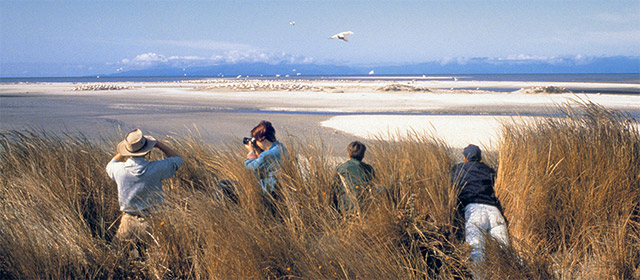He korero whakarapopoto
What is birdwatching?
Birdwatching is a hobby that attracts people who are interested in:
- studying birds in the wild
- spotting rare or unusual species
- taking photographs of birds
- tracking changes in population sizes or distribution
- making notes and sharing information about bird behaviour.
New Zealand’s birds
People come to New Zealand from around the world to see some of the 300 or more bird species. Many of the native birds evolved in isolation for millions of years, free from predators such as rats and stoats. Also, humans arrived much later than in other countries. With no need to fly away, some birds became flightless and behaved more like mammals. Many have unusual features.
- The kōkako (wattlebird) runs along tree branches, like a squirrel.
- The wrybill plover’s beak twists to the right.
- The kea (mountain parrot) is cheeky – it hides objects or steals your food.
- The kiwi cannot fly, and probes the ground for food.
Where can you watch birds?
There are many bird habitats: the coast, estuaries, lakes, forests and mountains – and your own neighbourhood.
In gardens and parks, you can see native tūī, fantails, grey warblers and bellbirds. A bird bath or bird feeder will bring them close to the house. Ducks and pūkeko live around town lakes.
In the forest there are riflemen, tomtits, kākā and parakeets.
On the ocean there are petrels and albatrosses. Tourist boats take birdwatchers out to see them.
Endangered birds
Birdwatchers can observe rare or endangered birds at pest-free sanctuaries. Saddlebacks, takahē, kiwi and other species are safe from predators at sites such as Tiritiri Matangi Island near Auckland, Kāpiti Island near Wellington, and Zealandia (Karori Sanctuary) in Wellington.
Getting started
Use guidebooks with drawings or photos, or the website New Zealand Birds Online.
You can see more detail if you use binoculars.
Be patient: stay still and wait for birds to appear.
Make notes about birds you see, recording the date, time, place, behaviour, and what they eat.
Take photographs, but don’t disturb the birds.
Join a group such as the Ornithological Society of New Zealand (Birds New Zealand).





